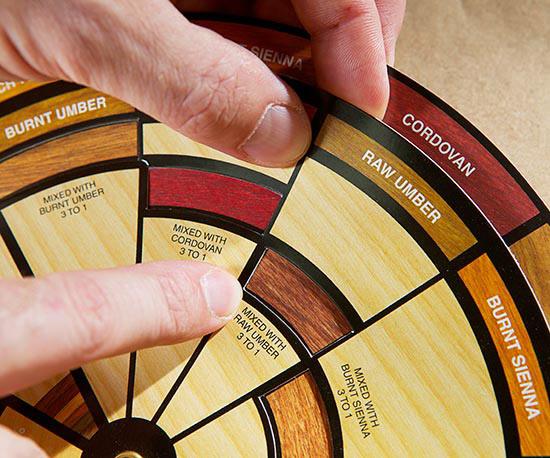Matching New Stain to Old Wood
My house was one of thousands that flooded in 2016 in the Baton Rouge, La area. I did not have time to elevate any antique furniture, family heirlooms, etc before leaving the house. So, upon return all of my furniture had a water line about 14 inches up from the floor. Most of my neighbors panicked and throughout anything, including priceless antique furniture and family heirlooms, that had come in contact with the water.
Now, a few points. If your furniture contained any type of composite panel, particularly particleborad, fiberboard, or hardboard, it swelled and needed to go. I had a round dining room table that was made from solid red oak. It was nothing fancy but was unique in that it was hand made by Amish men in Pennsylvania. I did not want to strip and refinish the entire piece. So, I began looking at options on how to restain the bottom 14 inches to match the rest of the table. Ditto for the chairs.
I waited for the wood to dry back down to 6-8% moisture content, then I removed the exisiting stain on the bottom 14 inches. I sanded it down by hand and eventually finished with steel wool.
Matching paint is a simple process but stain is not so easy. Go to your local hardware/paint store and get a stain wheel also known as a finisher’s color wheel. It is a round shaped wheel that spin to try to locate the best visual match to your exisiting stain. The wheel represents common pigments such as umber, cordovan, sienna, and ochre. These are nothing but elaborate names for common stain colors –brown, red, orange, and yellow. These colors are printed on the rim of the inner wheel, and again on the outer wheel. When you line up different pairings on the rims, small windows in the inner wheel show how the mix creates a third color.
Line up cordovan on the outer wheel with raw umber on the inner wheel, and you’ll see in the window approximately how they mix.
Look for a close match
The windows might reveal several blends that come close to your target but rarely are perfect. If one looks too light and the other too dark, choose the lighter, because stain, like paint, is easier to darken than lighten. Now, decide which off-the-shelf stains come closest to the two stains that you selected from the wheel. Note that the grain or color of your wood may affect the results. Some manufacturers sell inexpensive stain samples the size of ketchup packets perfect for experimenting. Now, that you have two samples you need to mix the two together at different ratios to find the right combination. A few tips: Do your testing on the same wood as your project. If not possible, then get a piece that is as similar as possible in species and sanded to the same grit. Stir your stains well because pigments tend to settle in the bottom of the cans. Do not make a decision on match until the test sample has dried. Apply a topcoat to your test board. The choice of finish will affect your results. For example, even crystal-clear finishes will alter the stain’s final color.
Darker stain
The first option to darken the color of the stain is to add another coat of stain after the first has dried. Stain is different from paint because the binders that help stain adhere to wood form a mild seal coat, which limits the absorption of excess stain. Another option is to wait to wipe off the excess stain. The time delay darkens the color because more of the stain’s solvent evaporates, increasing the ratio of colorant to liquid. Many people incorrectly think that with increasing time the stain will penetrate the wood deeper and thus darker the color. Without pressure, as with pressure treated wood, the penetration will be minimal. A few words of caution. Stain is meant to enhance the natural grain. A heavy layer of pigment can obscure the wood grain.
Meet the Author
Dr. Todd Shupe is the President of Wood Science Consulting, LLC. He is a well-recognized expert on wood forensics, wood preservation, wood decay and degradation, and wood species identification. He has a broad background in new product development, quality management, and marketing and sales in both the public and private sectors. For more information please visit DrToddShupe.com.
We welcome your comments below.
Thank you for visiting. We trust that you have enjoyed reading our articles.
Liked this post? Read more below or search for more topics . . .


